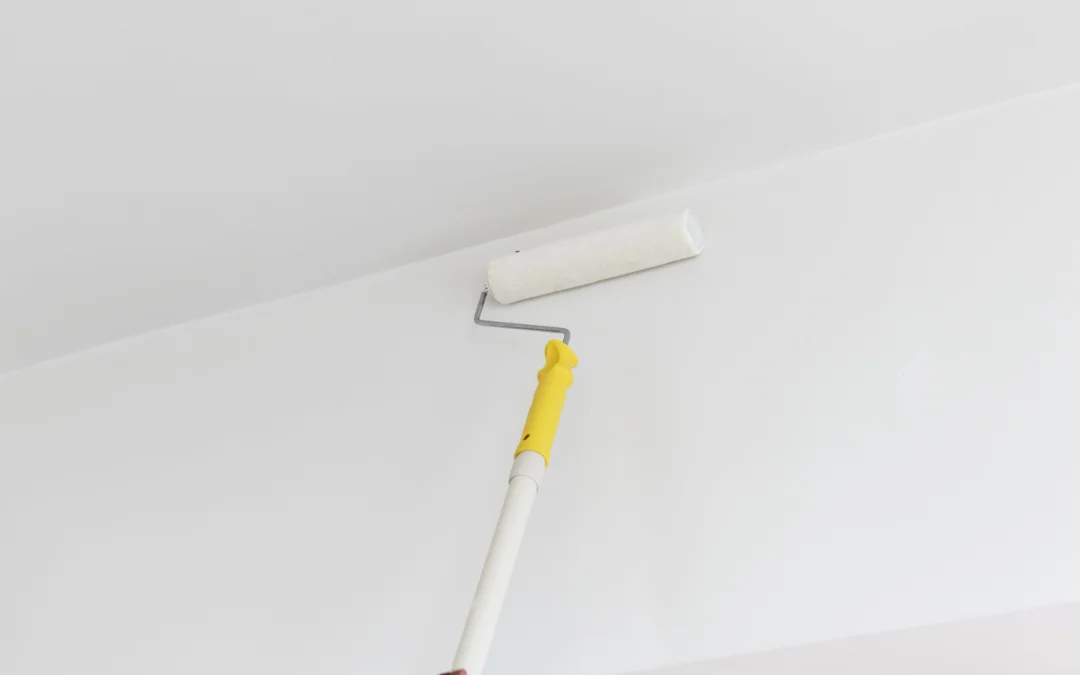It’s safe to say that the quality, color, and type of paint used on your property plays a huge role in terms of visual appeal and aesthetic desirability, regardless of whether it happens to be a domestic home or commercial building. However, it’s worth noting that even most quality paints can’t last forever and their functional lifespans are impacted by a myriad of factors:
- Type of surface
- Number of coats applied
- Presence of crevices, indentations, and fissures in the substrate
- Quality of your primer
- Temperature
- Humidity
- Exposure to grease, oils, and emollients
- Frequency of physical abrasions and scuffs
- Intensity of cleaning and wiping
With these dynamics and considerations in mind, let’s take a closer look at the obscure subject of ceiling paint, namely with regard to how often you should repaint the most prominent areas of your property.
The General Warning Signs
Before we touch on the specific sections of your home or business, it’s important to address the most conspicuous indicators that it’s time to begin planning a repainting project:
- Flaky, bubbling, or cracking paint
- Noticeable fading
- Morphing, changing, or inconsistent paint colors
- Chipping and fragmenting
- Chalking (when your paint leaves dusty residue on your fingers upon contact)
- Rotting substrates
- Hardened caulk
Should you skim coat your ceiling prior to painting? If you see any of the damages mentioned above, it may be a good idea to skim coat first to ensure a longer-lasting paint job and a smooth surface.
Most notably, you should pay attention to how you feel about your interior paint and how it affects your level of pride and confidence in terms of your property’s aesthetics.
Hallways, Corridors, and Vestibules
These areas tend to feature a lot of foot traffic, built-in lighting fixtures, and varying temperatures, depending on the particular season and proximity to entryways, which is why you should adhere to a general timeline of approximately three to four years before repainting these sections.
Living Rooms and Dining Rooms
The ceiling paint in these areas tends to last longer than your hallways, mainly due to the fact that these rooms feature laid-back activities and minimal exposure to detrimental factors. With this notion in mind, you should plan on having to repaint your living room and dining room ceilings every five to seven years, although any décor changes will necessitate more frequent painting to maintain a cohesive theme.
Bedrooms
The ceiling paint in an adult’s bedroom can last up to a decade without requiring a new coat but the same cannot be said about children’s rooms. With the constant playing, toy-throwing, jumping on the beds, and other hectic activities, any damage sustained to the upper sections of the walls can quickly spread to the ceiling and that’s without mentioning the inexplicable marks and scuffs that somehow manage to appear on beams and ceilings throughout the year.
This is why you should apply a durable coat of paint in activity-packed children’s areas and expect to facilitate touch-up work once every two to three years or so.
Kitchens
As the heart of the home, your kitchen represents a high-usage area that’s susceptible to a wide range of environmental fluctuations and greasy buildup, particularly around your cooking implements and extractors. Irrespective of how often you cook, it’s worth noting that hot air rises very quickly and causes oily particles and other sticky compounds to cling to your ceiling, which can cause the paint to become tarnished, discolored, and blackened with the passage of time. So even if you coat your overhead surfaces with a stain-blocking paint and establish a monthly cleaning regimen, you’ll probably have to repaint your kitchen once every 24 months to uphold its sheen and luster.
With this handy guide at your disposal, you can begin carefully evaluating your needs throughout the property and stay on top of your ceiling paint as a true professional would.
FAQ
How long should ceiling paint last?
Ceiling paint typically lasts between five to ten years, depending on the room’s usage and environmental factors. High-traffic or high-moisture areas like kitchens and bathrooms may require repainting more frequently. Regular maintenance and quality paint can help extend its lifespan significantly.
Is it worth repainting a ceiling?
Yes, repainting a ceiling can drastically improve a room’s appearance and brightness. Over time, ceilings accumulate discoloration, stains, and wear that subtly dull a space. A fresh coat not only enhances aesthetics but can also increase the perceived cleanliness and value of your property.
Can you put too many coats of paint on a ceiling?
Yes, excessive layers of paint can lead to cracking, peeling, or an uneven surface over time. Ceilings, in particular, benefit from a smooth and controlled application to avoid texture buildup. It’s best to use only as many coats as necessary for full coverage and uniform color.


